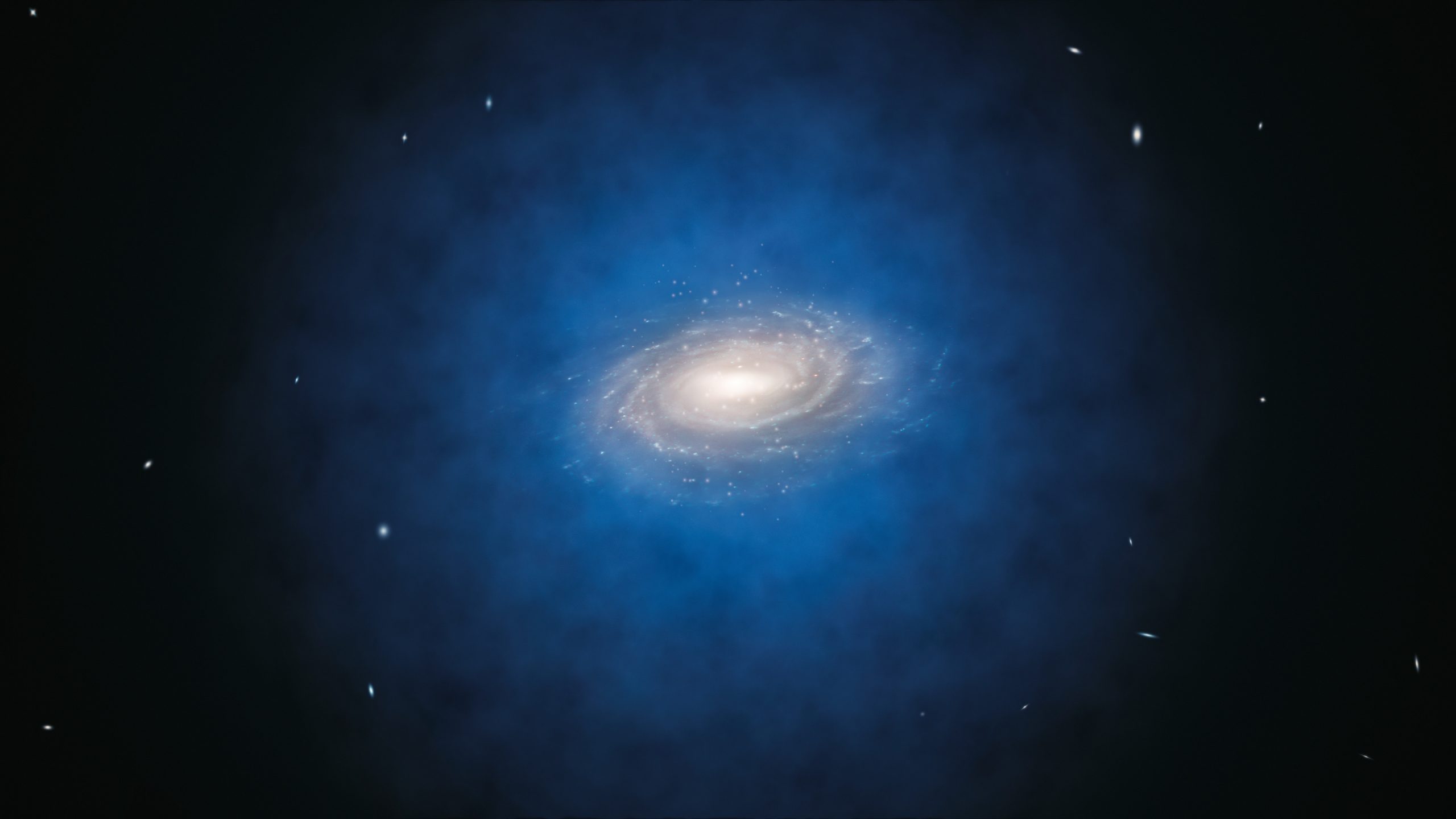Can supermassive black holes collapse directly from dark matter?
At first glance, a black hole and dark matter sound like a perfect combination. However, there is a problem: dark matter is mainly found in the outer regions of galaxies, in massive halos. Supermassive black holes, on the other hand, form the core of a galaxy. Does there nevertheless go something together, which belongs together?
Perhaps. As far as supermassive black holes are concerned, cosmology still has a problem. Because how exactly they originally formed is one of the biggest problems in the study of galaxy evolution today. Supermassive black holes were observed as early as 800 million years after the Big Bang, but how they were able to grow so quickly remains unexplained.
Standard models assume that normal baryonic matter – the atoms and elements that make up stars, planets and all visible objects – collapses under the action of its own gravity, forming black holes that then grow over time. A new paper is now investigating the possible existence of stable galactic dark matter cores surrounded by a rarefied halo of just such matter. The researchers find that the centers of these structures could become so dense that they also collapse into supermassive black holes once a critical threshold is reached.
According to the model, this could have happened much faster than other proposed formation mechanisms. This would have allowed supermassive black holes to form in the early universe before the galaxies whose centers they now inhabit, contrary to current understanding.
Carlos R. Argüelles, the Universidad Nacional de La Plata and ICRANet researcher who led the study, comments, “This new formation scenario could provide a natural explanation for how supermassive black holes formed in the early universe without requiring prior star formation or relying on seed holes with unrealistic accretion rates.”
Another intriguing consequence of the new model is that the critical mass for collapse to a black hole may not be reached for smaller dark matter halos, such as those surrounding some dwarf galaxies. The authors suggest that this could then lead to smaller dwarf galaxies still having a central dark matter core, rather than the expected black hole. Such a dark matter core could mimic the gravitational signatures of a conventional central black hole, while the outer dark matter halo could also explain the observed rotation curves of the galaxies.
The authors hope that further studies will shed more light on the formation of supermassive black holes in the earliest days of our universe. In addition, it should be worthwhile to study the centers of non-active galaxies, including our own Milky Way, to see if they could harbor such dense dark matter cores.
